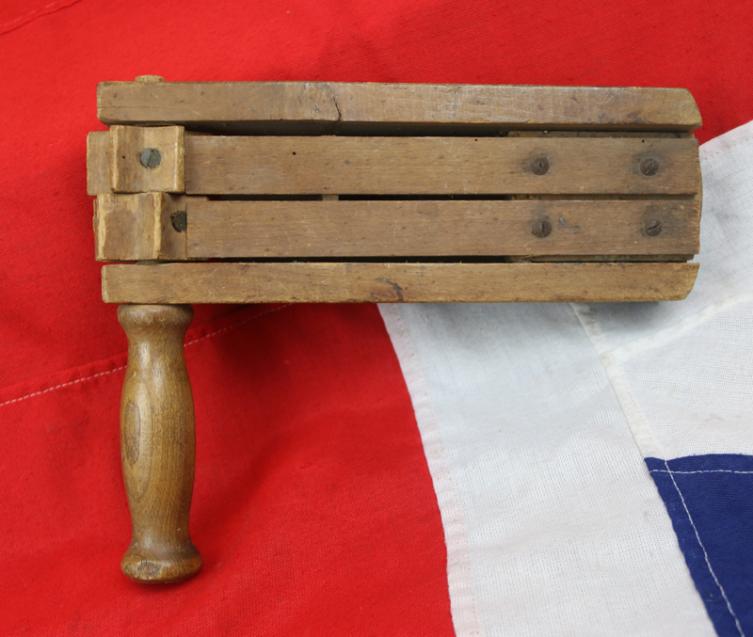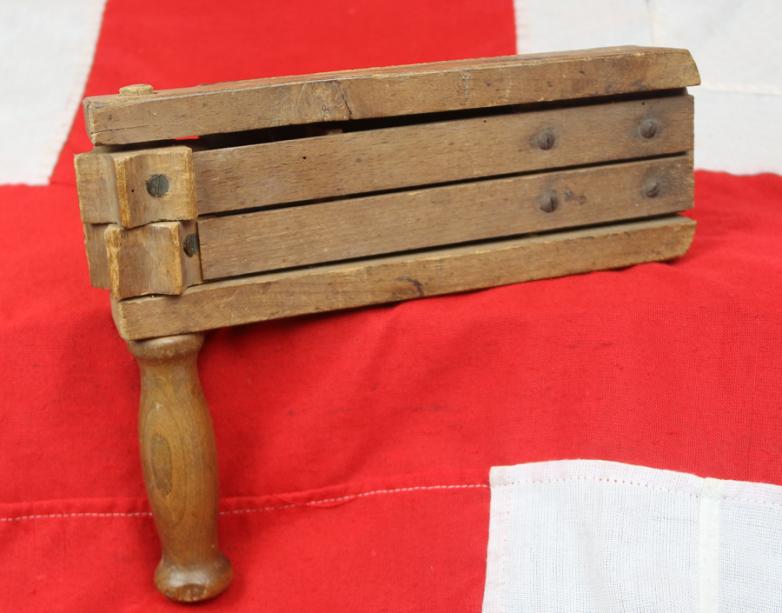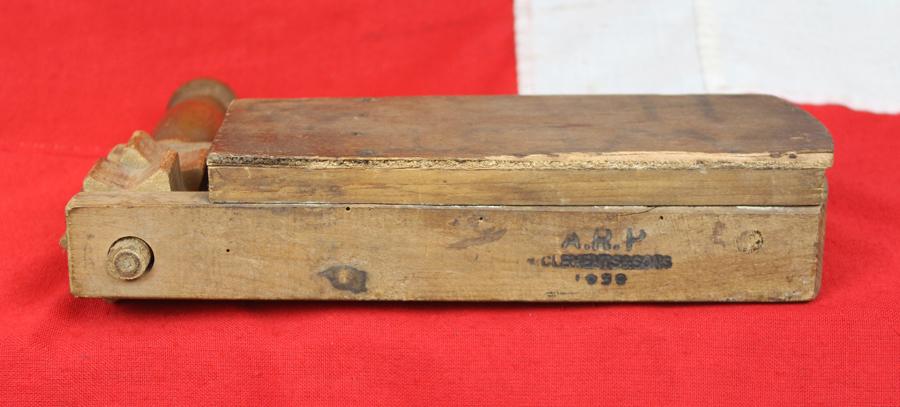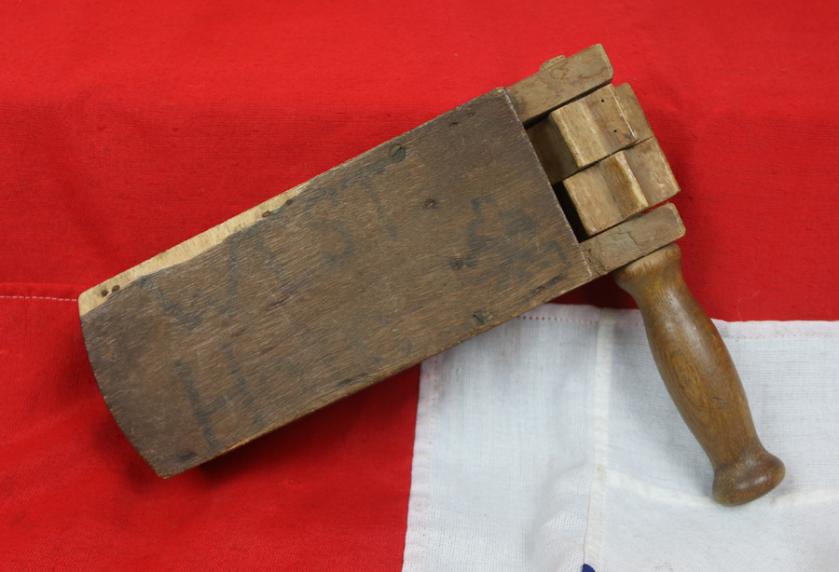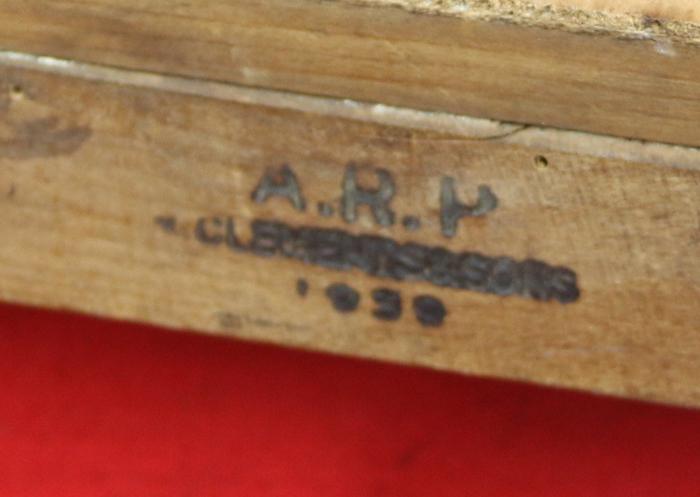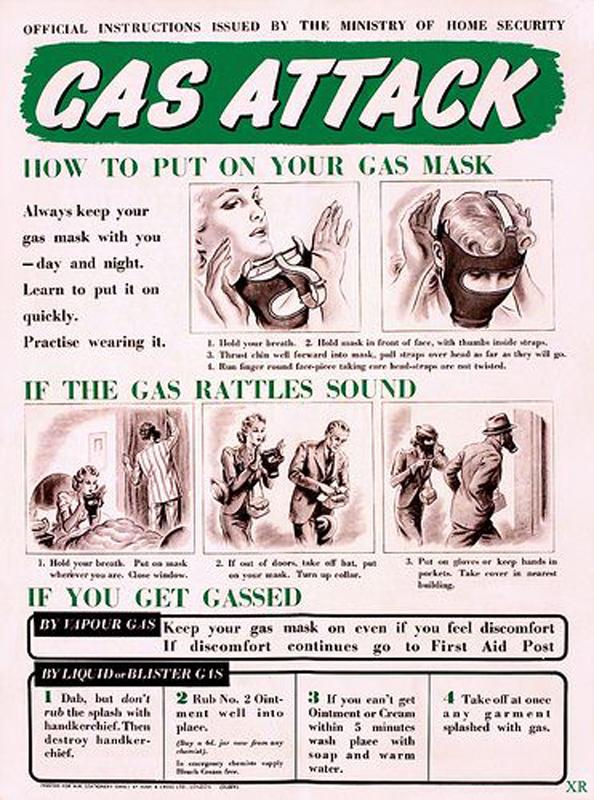Second World War Wooden ARP Gas Rattle.By Clements and Sons 1939
An air raid warden's wooden gas rattle. In perfect working order, painfully, seismically, loud. This gas rattle is made from beechwood with a turned handle and in original working condition. The top is stamped 'Clements and Sons, ARP'. 'ARP' stands for 'Air Raid Precautions' and the rattle was used to give warning of a gas attack or during gas mask drills. During the Second World War the British government passed the Air Raid Precautions Act, requiring local authorities to ready themselves in case of an air attack, with the air raid warden being at the for front. The warning was given by holding the handle and spinning the rattle around, emitting a strong distinctive clacking sound, the 'all clear' signal was given by ringing a hand bell. After the war the rattles became a common sight in the hands of supporters at football matches. The Nazis Developed Sarin Gas During WWII, But Hitler Was Afraid to Use It. Hitler certainly had the opportunity to use sarin in World War II. The Nazis were actually the ones to develop the deadly nerve agent—accidentally. In late 1938, the German scientist Gerhard Schrader was tasked with inventing a cheaper pesticide to kill the weevils that were damaging German fields and orchards. By mixing phosphorus with cyanide, he came up with a substance that was way too toxic to use for agriculture purposes.
After Schrader’s employer, drug conglomerate I.G. Farben, informed the German army of his discovery, some impressed army scientists dubbed the liquid “tabun,” after the German word for taboo. Back in the lab, Schrader tinkered some more and came up with something even more toxic. He called the new substance sarin, an acronym for the names of the four scientists who developed it.Hitler certainly had the opportunity to use sarin in World War II. The Nazis were actually the ones to develop the deadly nerve agent—accidentally. In late 1938, the German scientist Gerhard Schrader was tasked with inventing a cheaper pesticide to kill the weevils that were damaging German fields and orchards. By mixing phosphorus with cyanide, he came up with a substance that was way too toxic to use for agriculture purposes.
After Schrader’s employer, drug conglomerate I.G. Farben, informed the German army of his discovery, some impressed army scientists dubbed the liquid “tabun,” after the German word for taboo. Back in the lab, Schrader tinkered some more and came up with something even more toxic. He called the new substance sarin, an acronym for the names of the four scientists who developed it. By the end of World War II, Nazi Germany had produced some 12,000 tons of the deadly chemical compound, enough to kill millions of people. From early in the conflict, high-level military officers pressed Hitler to use sarin against their adversaries. But despite such pressure, Hitler declined to employ it as a chemical weapon against the Allied Powers.
As reported in the Washington Post, some historians have traced this reluctance to Hitler’s own experience as a soldier during World War I. Though Germany was the first to unleash chlorine gas on French troops during the Second Battle of Ypres in April 1915, Britain and France would also employ chlorine and mustard gas during the Great War, generating widespread outrage over the new horrors of chemical warfare. Small sliver of plywood backing missing [see photo]
Code: 23740
150.00 GBP

